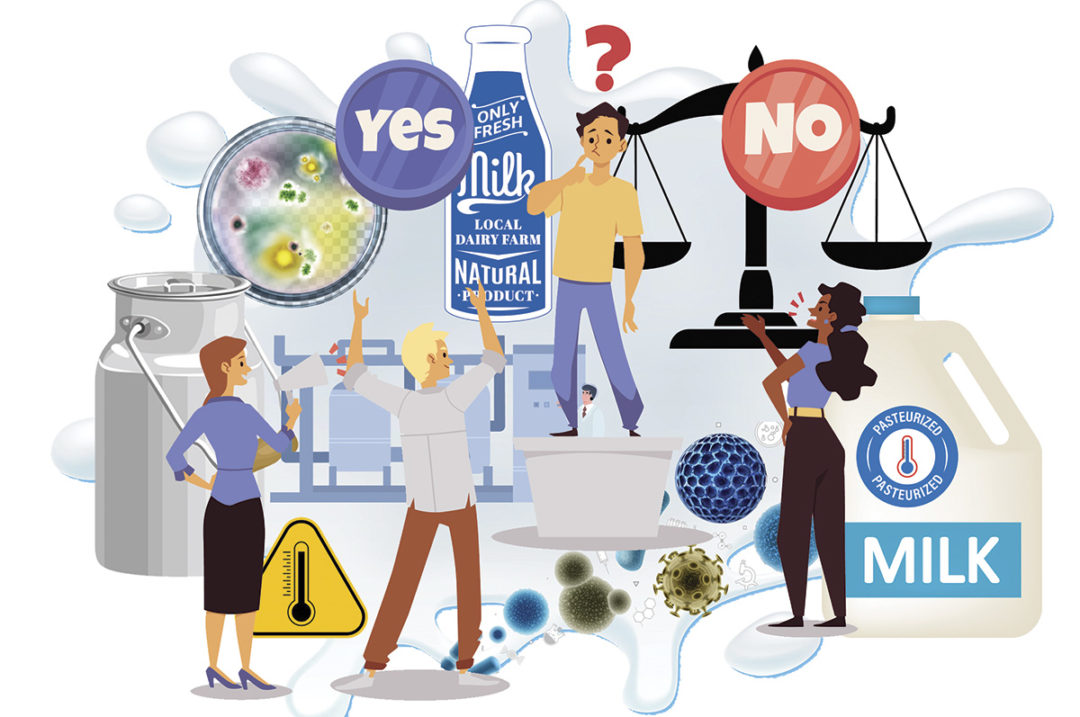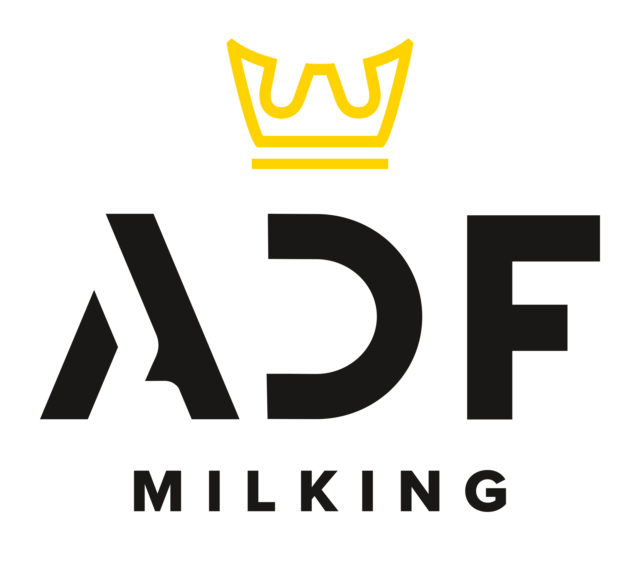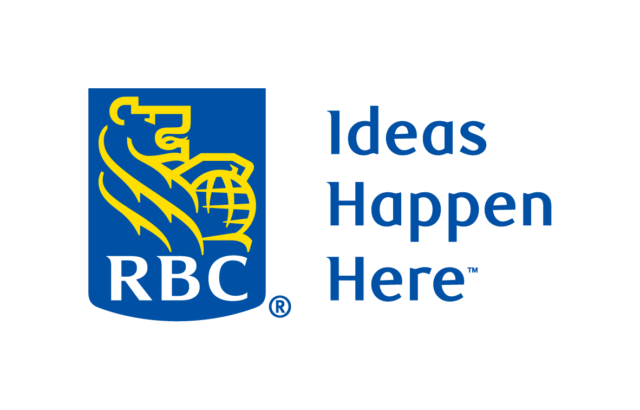Through regulations enacted federally in 1991, selling raw milk in Canada is illegal.
Although sales of raw milk are restricted or unlawful in some U.S. states and in Scotland, Canada is currently the only G7 country that completely prohibits its private sale and distribution.
Canadian public health officials advise against the consumption of unpasteurized dairy due to significant food safety risks, particularly related to the possible presence of harmful pathogens like salmonella, E. coli and listeria.
For milk to be salable, it must be heated and then rapidly cooled over a length of time long enough to kill any pathogens present; this process is known as pasteurization. Health authorities say pasteurization increases the safety of milk while maintaining its nutritional properties.
Estimates report somewhere between 2% and 4% of Canadians consume unpasteurized milk.
The raw milk movement
Legislation forbidding the sale and consumption of raw milk has often faced opposition – usually voiced by a vehement few. Advocates for raw milk argue consuming it brings many health and nutritional benefits, ranging from increased intake of beneficial nutrients and enzymes to protection against asthma, allergies and eczema, suggesting it is safer and more healthful than pasteurized milk.
Others interested in raw milk like it for its purported transparency, as many international models allowing raw milk sales often see the consumer purchasing the product directly at the farmgate, eliminating barriers between the consumer and their food source.
In the U.S., these trends have gained traction. Over two dozen states – including Iowa which permitted raw milk sales on small-scale farms this past July – have legalized the sale of unpasteurized milk to varying extents. Post-pandemic consumer demands point to an increased desire for raw milk as a more natural alternative to pasteurized dairy products or plant-based milks.
Public health warnings
Despite growing consumer interest in raw milk, public health officials continue to emphasize the need for strict enforcement of pasteurization in Canada. A recent commentary piece published in the Canada Communicable Disease Report called this observed shift in consumer preferences “alarming,” stressing the health risks of consuming raw milk “far outweigh any potential benefits.”
“One of the major issues is that people are not aware of a lot of the health risks,” says Angela Silveira, a public health and preventive medicine physician and lead author on the commentary article. She says greater education is needed, as is providing evidence of the risks of consuming raw milk to a broad audience, especially agricultural workers, farmers and those following the trend. She suggests social media campaigns featuring evidence of the health risks could be impactful to reach this wider audience.
Canadian milk boards have also expressed their support for the role of pasteurization in the industry, citing the value of mitigating public health risks. “Pasteurization is an integral part of a safe milk supply and industry. It ensures that producers, processors and everybody are providing a healthy and safe product to Canadians,” says Reuben Joosse, the executive director of Alberta Milk.
Disease outbreaks in pasteurized vs. unpasteurized dairy
In a systematic review of disease outbreaks linked to pasteurized and unpasteurized dairy products in Canada and the U.S., researchers concluded that public warnings about the risks associated with the consumption of unpasteurized dairy must be upheld. “So few people [consume raw milk] and yet, there were roughly the same number of outbreaks” from consuming unpasteurized dairy as from pasteurized dairy consumption, says one of the review contributors and professor at the University of Alberta, Joan Robinson.
Of the studies examined by the review, it was found that in disease outbreaks linked to the consumption of pasteurized compared with unpasteurized dairy products in Canada and the U.S. from 2007 through 2020, two-thirds of illnesses were linked to unpasteurized dairy products. However, the proportion of hospitalizations and deaths due to the contraction of food-borne illness from consuming dairy products was higher in pasteurized products. This is likely because listeria was the primary pathogen reported in these outbreaks, which were typically traceable to contamination post-pasteurization (especially in soft cheeses). Listeria results in more severe infections than other pathogens found in milk.
Vulnerable groups like children and pregnant women are at the greatest risk of severe symptoms, including stillbirth and miscarriage, from unpasteurized dairy and soft cheese-related illnesses.
Disease outbreaks from unpasteurized dairy can also lead to wider impacts, with reverberations reaching taxpayers more generally. Echoing the concerns raised in her article, Silveira argues public health risks could be further mitigated by offering education about risks from consuming unpasteurized milk from their own cows. If a dairy producer or their family member contracts a disease or illness from pathogens present in unpasteurized milk, symptoms can be severe, possibly requiring them to seek treatment at the hospital. “That increases hospital capacity and increases funds for hospitals as well. When dealing with communicable diseases, organisms and diseases they cause can be easily spread … this can be more of an outbreak situation that puts other people at risk. Given that there is risk for others, there should be regulations or processes to be followed to keep everyone safe,” she explains.
Pluralism and challenges to conventional food systems
From a legal perspective, recent legal scholarship on the coexistence of multiple legal traditions – otherwise known as legal pluralism – in the raw milk debate has raised questions about the responsibility of policymakers to facilitate greater dialogue between raw milk advocates and public health officials, arguing that science is not the only relevant source of reasoning.
For participants in the raw milk movement, challenging the dominant model in Canada’s food systems is fundamental to their advocacy. This is evident in the models through which raw milk is sometimes distributed in this country; programs like cow or herd sharing facilitate the procurement of unpasteurized milk. These programs function through total or partial buying or leasing of interest in a cow and its milk from an established dairy producer. They rely on the circumventing of the legislation that allows Canadian dairy producers to drink raw milk – at risk of being fined, facing licence suspension and even jail time.
This kind of system challenges conventional agriculture and procurement systems, creating an alternative food system where consumers swap grocery stores and supermarket chains in favour of small-batch purchasing direct from local producers.
Value-based judgments surrounding food and diets mean there are disagreements on the perceived value and risk of various food policies. For raw milk advocates, raw milk regulation might be perceived as an infringement on their constitutional freedoms and ability to foster local food systems, an interest that is often unaddressed by policymakers.
The nuance of this debate is central to some of the ideas tackled by Sarah Berger Richardson’s research on this topic. “If you have concerns about environmental sustainability, concerns about how workers are treated, or if you have concerns about how the animals are treated, and there's no way of going to the farmgate in the way that you can for eggs and meat, even if it is for very niche or small quantities, that's something I think is kind of problematic,” says Richardson, associate professor with the faculty of law at the University of Ottawa.
She argues that policymakers tend to simplify complex risk assessments with a focus on microbial safety to the exclusion of other considerations about what makes food good to eat. This creates inconsistencies in the legal recognition of non-state normative orders. For example, while religious food laws such as kosher or halal requirements are integrated into food safety regulations, social or moral preferences related to pasteurization are categorically rejected.
“The government can still say, ‘No, we are going to maintain the rules.’ But to explain to [raw milk advocates], to justify and to give reasons – beyond saying, ‘You don't understand the science.’… Gives a better sense of why it's just not feasible to [allow raw milk distribution]. To acknowledge and validate those personal perspectives is important,” Richardson notes.
Consumer connection and trust
Outbreaks of food-borne illnesses in the past decades have negatively influenced consumer trust in the capability of Canadian food systems to provide food safe for consumption. This has resulted in an ongoing push for more rigorous food safety policies and oversight of producers, food processors and distributors. In many cases, the government and other regulatory bodies have responded to consumer demands accordingly. Consequently, food and agriculture remain one of the most regulated sectors in the Canadian economy.
Supply management adds another layer of complexity to the issue of unpasteurized dairy because it relies on centralized processing and distribution systems, adding barriers to the market that make creating systems outside of this framework challenging. Adding too many exceptional regulations, like different sales allowances based on farm size, also presents a challenge for policymakers.
However, this does raise questions about barriers to consumer familiarity with dairy farms, as on-farm sales are quite limited. Richardson says regardless of the arguments for or against pasteurization, the question of raw milk brings to light the physical and perceived distance between producers and consumers. “Some people who want raw milk have these very specific claims about what they think raw milk can or can't do, but I think the thing that's less talked about is the traceability to the farm. In most provinces, even if it's really challenging, there is a possibility of driving to a farm and getting some meat directly at the farmgates, but you just can't do that with milk,” she notes.
Alternatively, stakeholders like Joosse say pasteurization and its legislation are a means for fostering consumer connections and building trust. “[Pasteurization] is not creating any distance between producers and consumers; consumers are still getting the same product. Milk is coming off the farm, to the processors and they're simply just removing the harmful bacteria … so I struggle to see where [pasteurization] affects the connection between producers and consumers because it's the exact same product, just safer.”
Regardless of where you stand in the raw milk debate, Canadian legislation is clear: Selling and distributing unpasteurized milk is illegal. Currently, any revisions to this regulation seem unlikely.
References omitted but are available upon request by sending an email to the editor.










